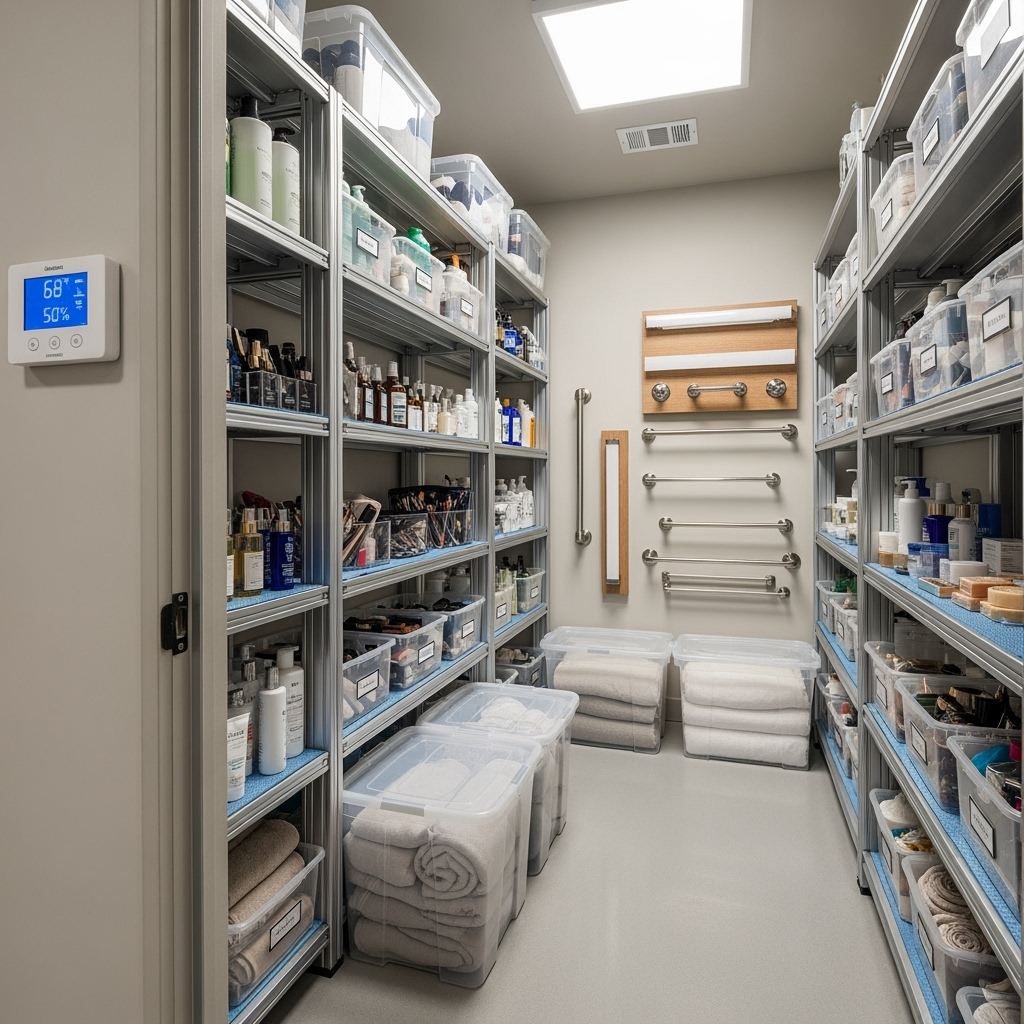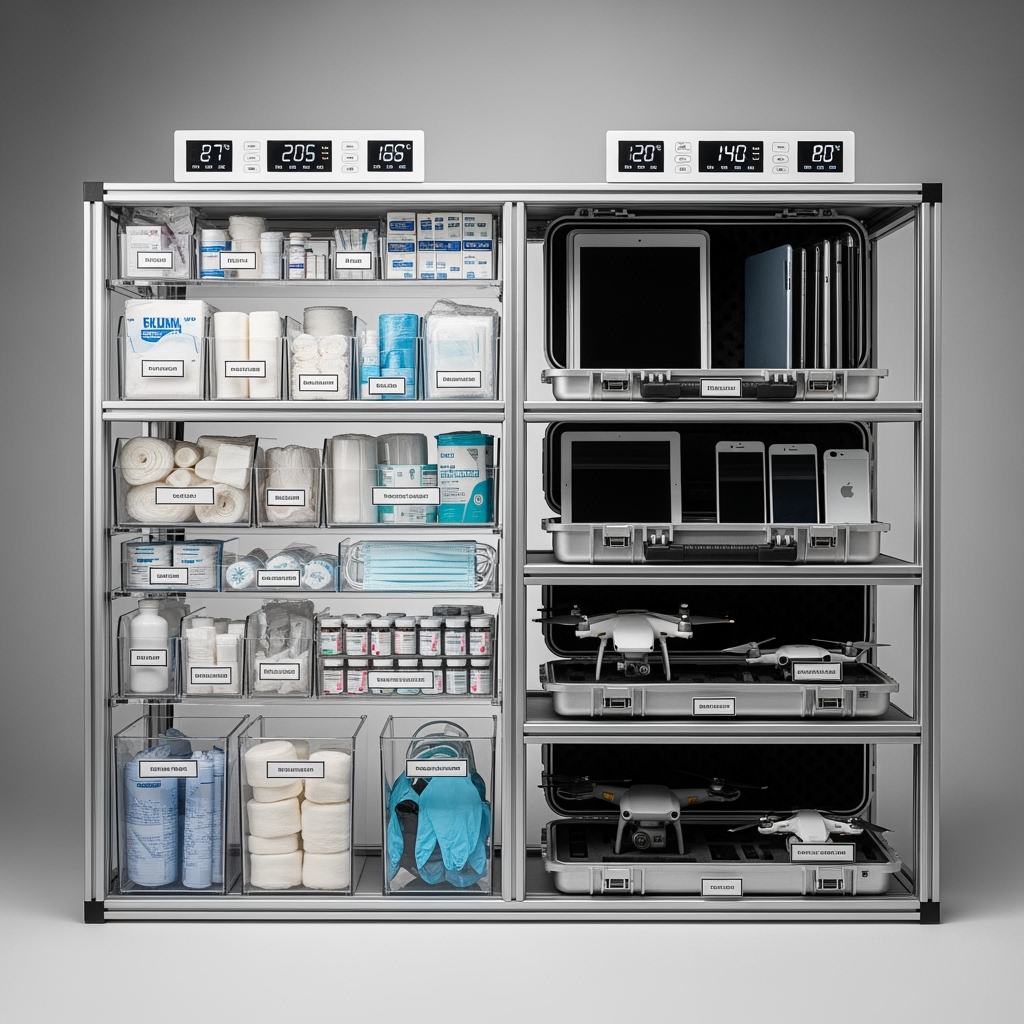Why Your Retail Inventory Needs Emergency Storage Protection
For retail business owners, your inventory represents one of your most significant investments. When natural disasters threaten your store location, having a solid emergency storage plan can mean the difference between business continuity and devastating losses. This comprehensive guide will walk you through how to protect your valuable retail inventory using climate-controlled storage solutions during emergencies.
Identifying At-Risk Inventory Items
Different types of retail inventory require varying levels of protection. Here’s what to prioritize:
- Temperature-sensitive items (electronics, cosmetics, certain clothing materials)
- Moisture-vulnerable merchandise (leather goods, paper products, wooden items)
- High-value inventory requiring special security measures
- Seasonal stock that needs preservation for future sales
Climate-Controlled Storage Benefits for Retail Inventory
Climate-controlled storage offers essential protection for your retail inventory during emergencies:
- Consistent temperature control prevents damage from extreme heat or cold
- Humidity regulation protects against moisture damage and mold
- Enhanced security features safeguard valuable merchandise
- Clean, controlled environment maintains product quality
Creating Your Emergency Storage Plan
1. Pre-Emergency Preparation
Take these steps before disaster strikes:
- Maintain an updated inventory list with priority items marked
- Reserve climate-controlled storage units in advance
- Create an emergency move-out timeline and checklist
- Train staff on emergency storage procedures
- Keep packaging materials readily available
2. During the Emergency
Follow these crucial steps when moving inventory:
- Execute your move-out plan according to priority items
- Document all inventory movement with photos and checklists
- Maintain proper packaging and protection during transport
- Monitor temperature-sensitive items closely
3. Post-Emergency Recovery
After the immediate threat passes:
- Assess inventory condition in storage
- Document any damages for insurance purposes
- Plan strategic return of inventory to store
- Review and update emergency procedures based on experience
Organizing Your Climate-Controlled Storage Space
Maximize your storage unit’s effectiveness with these organization tips:
- Create clear aisles for easy access to all inventory
- Use sturdy shelving units to maximize vertical space
- Label all boxes and areas clearly for quick identification
- Keep an inventory map of the storage unit
- Store most sensitive items away from doors and walls
Technology Integration for Inventory Management
Leverage technology to maintain control of your stored inventory:
- Use inventory management apps to track items
- Install temperature and humidity monitors
- Implement security cameras and smart locks
- Maintain digital documentation of stored inventory
Insurance and Documentation Considerations
Protect your business interests with proper coverage and documentation:
- Review insurance policies for adequate coverage of stored inventory
- Maintain detailed inventory records with photos
- Keep digital copies of all important documents
- Document storage unit conditions regularly
Conclusion: Being Prepared for the Unexpected
Emergency climate-controlled storage isn’t just about protecting your inventory – it’s about ensuring your business’s survival during challenging times. By implementing these strategies and maintaining a well-organized storage plan, you can protect your retail investments and maintain business continuity through any disaster.
Remember, the key to successful emergency storage is preparation. Start planning your emergency storage strategy today to ensure your retail inventory remains safe and protected when you need it most.










Leave a Reply